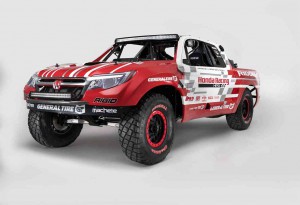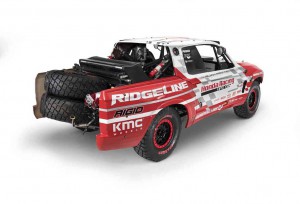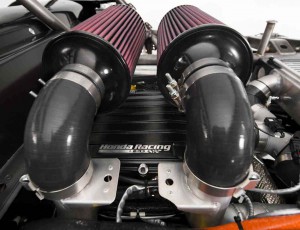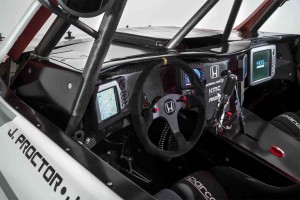Honda’s heading back to Baja, and that’s good news for both racing fans and those who’re simply hoping to get a good look at the reborn Ridgeline pickup.
The Japanese maker turned to the annual SEMA Show to announce it will be competing in the grueling Baja 1000 again, after turning in a series of class victories earlier in the decade. And the truck of choice for Honda Performance Development and the Proctor Racing Group? A modified version of the 2017 Ridgeline.
While it’s not exactly factory spec, the truck on display at the Las Vegas Convention Center gives us a good sense of what we’ll see when the 2017 Honda Ridgeline rolls into showrooms not that many months from now.
(Honda calls it quits, drops troubled airbag supplier Takata. Click Here for the latest.)
The original Honda Ridgeline, you’ll likely recall, was a swoopy affair. And while there was an intense, initial burst of interest in that anti-truck design, demand quickly tapered off, in part because true truckers wanted something that telegraphed its capabilities, and the Ridgeline just didn’t look like it was ready to work for a living.
Honda isn’t planning to make the same mistake twice. The second-generation Honda Ridgeline is what you might call a “truck truck,” and while Honda officials aren’t offering specific details, not engine specs, payload or towing figures, they promise it will keep up with pretty much anything you’d expect from a midsize pickup.
And the return to the Baja 1000 is clearly meant to get that message across. If you think the Le Mans endurance series is tough, it’s got nothing on the Mexican rally which sends teams out on what is, for all practical purposes, a 1,000-miles obstacle course.
In racing trim, the body and platform have been modified to soak up everything Baja can throw at the Ridgeline. But Honda is telling us the basic design, including the front fascia, hood, roof, bed and side profile are darned close to the street-legal Ridgeline. It’s a classic pickup with the face of a Honda Pilot.
That said, don’t expect to have an option box that will let you order the Baja version’s turbocharged 3.5-liter V-6. The production car definitely won’t be making 550-horsepower, we can confidently report.
Nor will you get the beefed-up suspension, roll cage, light bars and Sparco race seats.
Honda last ran the Baja in 2012, finishing the trek in a respectable, if not podium-class, time of 30 hours.
(Honda shows new Clarity fuel-cell vehicle at Tokyo Motor Show. Click Here to check it out.)
It’s been out of the midsize pickup market, meanwhile, for a couple years, and it wasn’t immediately apparent whether it would want to get back into a segment that has been on the wane for the better part of three decades. After all, even the truck-loving Detroit Big Three pulled out of that market segment.
But General Motors decided to give it another try, and the relaunch of the Chevrolet Colorado and GMC Canyon models last year has demonstrated there’s more life left than many expected in the midsize market. While Toyota’s recently restyled Tacoma has retained its long-time lead, the segment is clearly growing, and that’s good news for Honda, as well as Nissan, which will next year show us what it has in store for a redesign of its aging Frontier pickup.
(Honda owners among those likely to keep their cars longest, finds survey. Click Here for more.)





Maybe the “profile” but the racer is a tube chassis. A So the production version is “unitized” meaning stamped sheet metal construction meaning no seperate body on frame construction. Probably front wheel drive principle, with rear wheel drive available. Not a Raptor,but if they add a diesel option still viable for some people. Not everybody needs a raptor. But given the supposedly new ford raptor is suppose to have a 3.5 twin turbo v6 “production version” this honda production urban will be for the going to the store version, not the desert. They should have gone across the hallway and talked and taken parts from utv division.